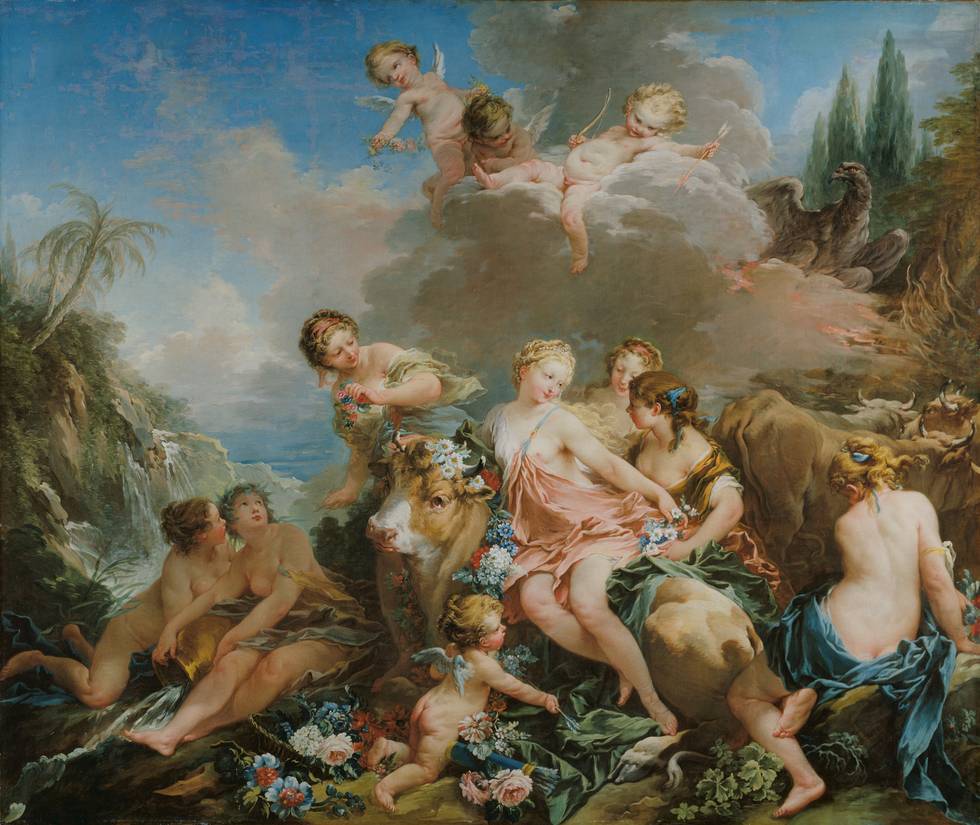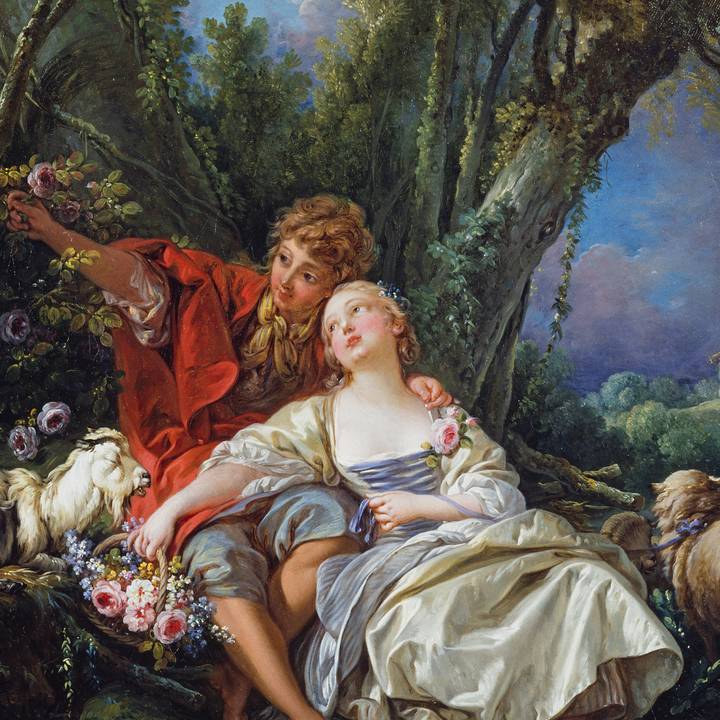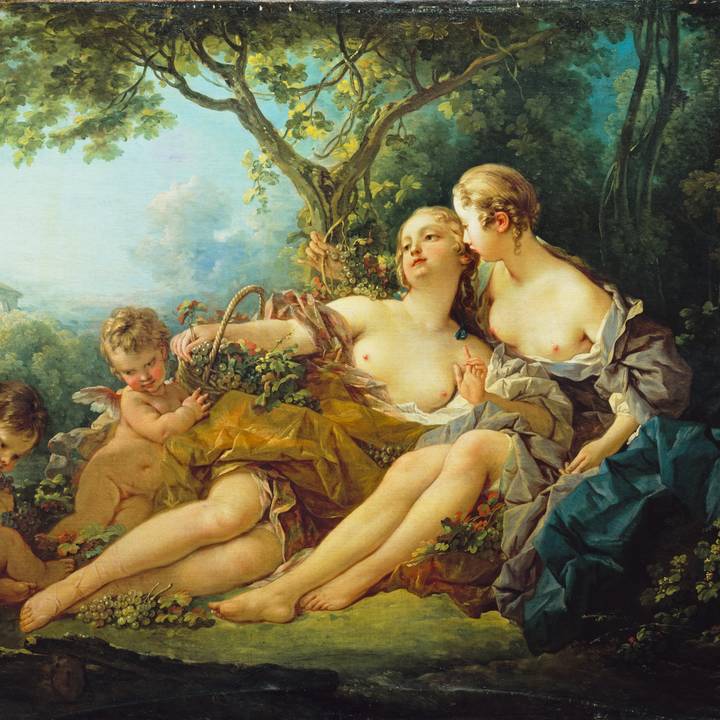Date: c. 1732-4
Materials: Oil on canvas
Measurements: 230.8 x 273.5 cm
Inv. No: P484
When Boucher returned to Paris from Italy in 1731, France was experiencing an extended period of peace, stability, and prosperity under Cardinal Fleury (1653-1743), Louis XV’s First Minister. The arts were flourishing and now 28, Francois Boucher (1703-1770) was eager to establish himself as a serious painter.
One of his first moves was to apply for Academy membership—a step that wasn’t possible before his time in Rome. Thanks to favorable reports from then director Nicolas Vleughels (1668-1737), Boucher was now recognized by the Academy, which admitted him in 1731.

However, the French art market mainly commissioned portraits and favored classic works over contemporary history paintings, forcing even accomplished painters like Jean-Marc Nattier (1685–1766) to turn to portraiture for income. To avoid a similar fate in minor genres, Boucher needed to make an impression.
Without a portfolio of large-scale historical works, he took a gamble, painting a series of historical pieces for free—including The Abduction of Europa and Mercury Confiding Bacchus to the Nymphs—to gain attention. These works, initially displayed in a hotel on rue Poissonnière owned by a lawyer named Derbais, attracted many admirers and helped boost Boucher’s reputation.
The themes of these paintings, largely based on love stories from Ovid’s Metamorphoses, were a departure from the historical and religious subjects of Boucher’s early career.
Since he created them on his own initiative, they likely reflect his personal taste and his ambition to be known as a painter of decorative mythology for the Parisian elite.
Jupiter’s transformation into a bull to abduct Europa was a popular subject in French art, with earlier depictions by Charles de la Fosse (1636-1716) and François Lemoyne (1688-1737) which in turn were inspired by Veronese, show similarly lavishly dressed Europas, surrounded by attendants in rich landscapes with views of the sea beyond.
As he was already depicting a natutical setting for Birth of Venus, Boucher decided to go a more sedentary route, adding his own touch with lighter coloring, sharper lines, and contrasts influenced by Baroque masters Pietro da Cortona (1596–1669) and Simon Vouet (1590–1649).
Boucher may also have been competing with Charles-Joseph Natoire (1700-1777), who painted the same scene in 1731 and a rival in the French court. In his preparatory sketch, Boucher borrowed the angle of Natoire’s bull’s head, later changing it to a frontal pose in his final painting.
While he retained details such as the returning cattle in the background and Jupiter’s eagle with putti, Boucher minimised secondary figures. Through his skillful use of light and shadow, he drew the viewer’s focus to the radiant figure of Europa at the center.
While Boucher aimed to make an immediate impact with his compositions, he also held the viewer’s attention through detailed and picturesque elements. Contemporaries admired the landscapes in The Abduction of Europa, with their leaning palms, rocky cliffs, and cascading waters.
By blending elements from nature, artistic tradition, and his own imagination, Boucher created a compelling visual world to captivate and spark the viewer’s imagination. His vigorous brushwork added texture, inviting the viewer to appreciate the foliage, flowers, the bull’s shaggy coat, and Europa’s creamy skin, accented by delicate touches of red on her nose and chin.
These paintings, Europa and Mercury, Boucher painted for Derbais were intended not to provoke desire but to express the Enlightenment concept of “the erotic,” defined as the birth of love—a balance between reason and feeling.
In The Rape of Europa, there is no hint of the fear or impending violation seen in Titian’s version of the myth. According to Ovid’s Metamorphoses (II, 835–875), Jupiter, disguised as a bull, charms Europa, who climbs on his back, after which he carries her away to Crete across the waves.
Text adapted from Hedley, J., Francois Boucher: Seductive Visions, London, 2004.



